Tata has turned up the heat on the electric car space by being the only manufacturer in India to have two EVs for the mass market. With Hyundai and MG having one each under their belt, Tata still leads the sales charts thanks to how the Nexon EV is priced. To make things more difficult for other OEMs Tata has launched the Tigor EV which is priced lower than the Nexon EV at just ₹11.99 lakh. Will this help Tata retain its No. 1 spot for EV sales or will it eat into Nexon EVs sales only time will tell. For now, we deep dive to understand how the Tigor EV is and is it worth your time and attention.
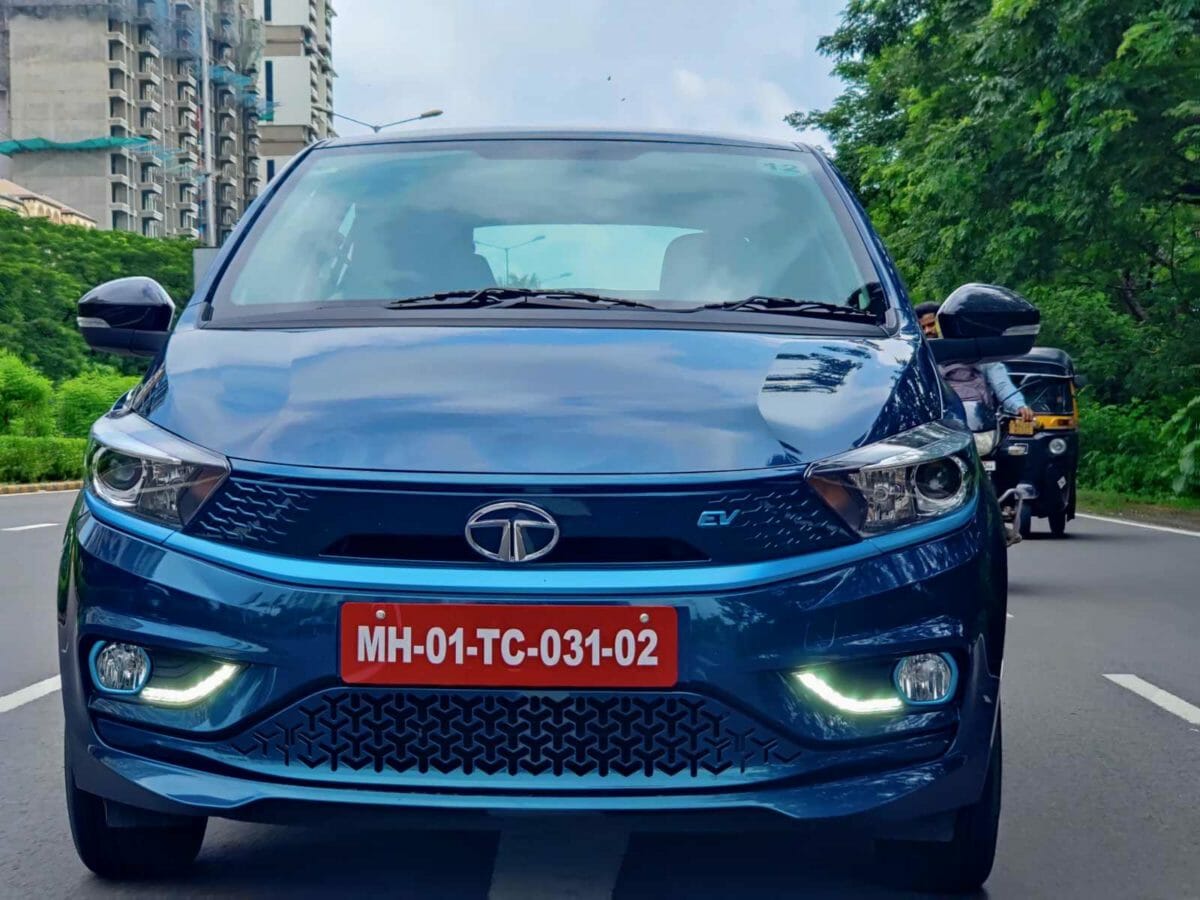
Design
In terms of looks, the Tigor EV is no different from its ICE counterpart. It has the same design language, same dimensions and the same wheelbase. What’s different is the colour scheme; especially the Teal Blue which is exclusive to Tata’s EV line and we have seen the same colour in the Nexon EV as well. There is another colour option in the form of Daytona Grey. The Aqua blue accents all around the car and the wheel caps along with the EV badging all across the car sets it apart from the ICE versions. The 14″ steel wheels look like alloys with the full wheel cap and look nice with the blue accents on them. The sloping roofline gives the car a coupe-like look much like the Petrol Tigor. There are some chrome bits on the door handles, a chrome line that extends from the front window sill all the way to the rear cut glass and a bold chrome line between the two tail lights. The dual-tone variant gets a piano black roof, dual-tone ORVMs and piano black shark fin antenna.
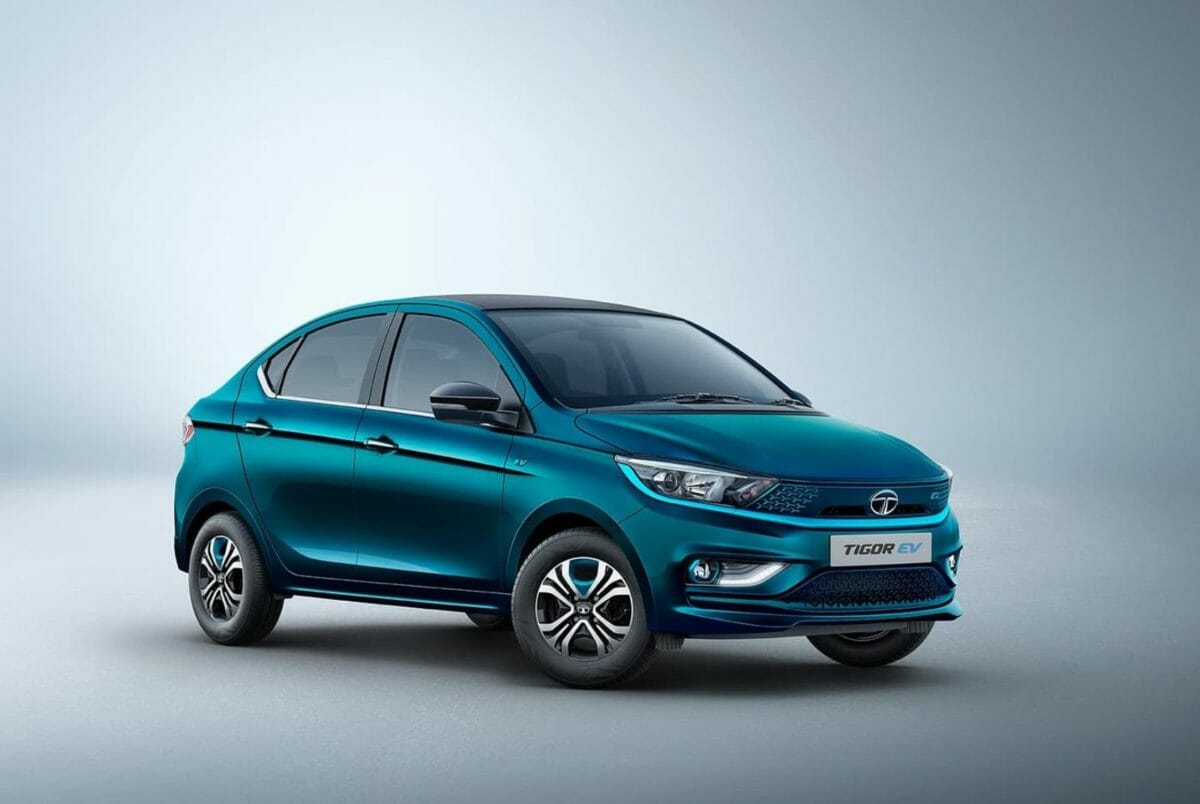
Interior
Well, there is nothing new to report here, the Tigor EV gets the same interiors as the petrol Tigor except for some cosmetic changes. There are blue accents on the air vents and the instrument console and instead of the black and grey, you get black and white dual-tone interiors with some piano black inserts with chrome accents. The upholstery too is finished in black fabric along with the electric blue stitching and contrasting tri-arrow design on the seats. The driver seat is adjustable for height manually. The comfort of the seats could have been better though. The rear seat gets an integrated armrest however, there is none at the front. The headrests are adjustable only on the driver and co-driver seats while they are fixed for the rear passengers. The rear seat should be comfortable for 4 adult passengers and a child. For in-car entertainment, Tata has equipped the Tigor with a Harman Kardon infotainment system with a 4 speakers, 4 tweeters set up on the top variants. The 7-inch touchscreen is touch-sensitive and offers a smooth operation. Overall the interiors are good except for some hard plastics and some panel gaps which Tata should have rectified given the price the car is being offered at
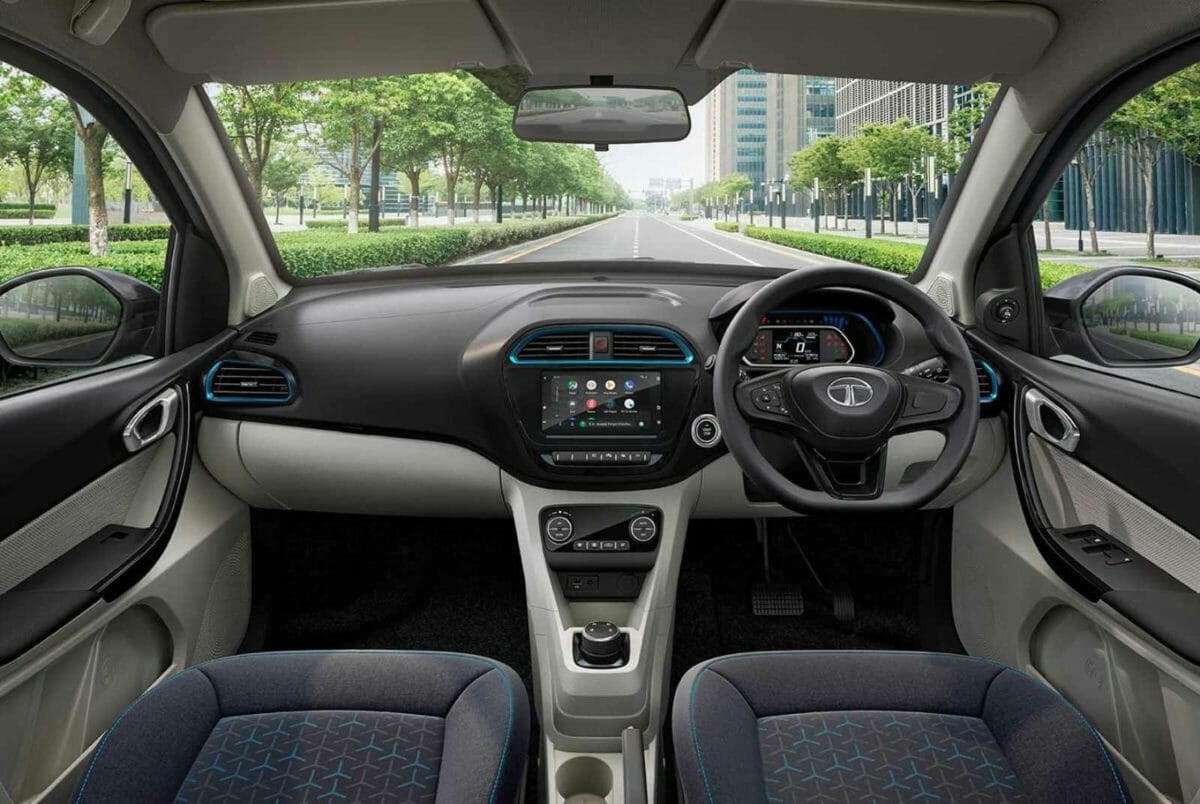
Battery & Safety
Powering the Tigor EV is a 26 kWh battery pack and a Ziptron motor that churns out 74 bhp and 170 Nm torque. The ARAI certified battery range is 306 km under standard testing conditions. The EV can zip from 0-60 kmph in just 5.7 seconds. The liquid cool high-density battery also gets an IP67 rating from dust and water resistance. The Impact-Resistant Battery Pack casing of Tigor EV complies with AIS – 048 standard for nail penetration at cell Level. The car is compatible with a globally acceptable CCS2 charging protocol and can be fast-charged as well as slow-charged from any 15 A plug point. The Tigor EV has also scored a 4-star G-NCAP rating just like its ICE counterpart. You can read more about it here. The car also gets two airbags, ABS, EBD and Cornering Stability Control (CSC) as standard.
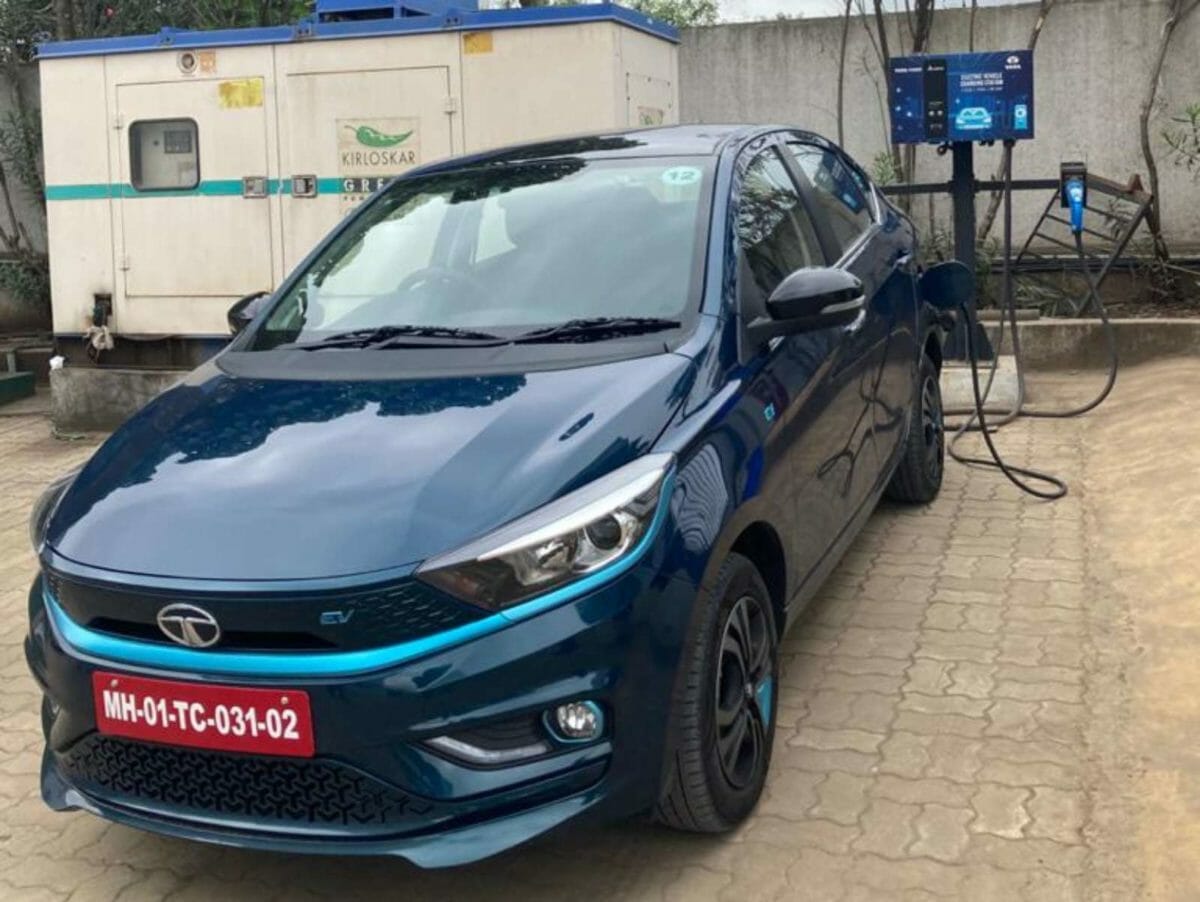
Driving Experience
The Tata Tigor EV gets a better suspension than the ICE Tigor and since the car has a better centre of gravity, the handling is better as well. The car is really easy to drive and you won’t feel any fatigue even in hours of bumper to bumper traffic. In the D or Drive mode, the car you get more than enough torque to get a move on and has enough power to keep you going till you reach a speed of 121 kmph. However, the Sports mode is where all the fun is. You get the full 170 Nm torque as soon as you hit the throttle and 0-60 kmph comes in a few milliseconds shy of 6 secs and 0-100 comes under 12 secs which are terrific figures for a car in this segment. One thing to note though, the Sports mode will suck out the battery faster and reduce overall range. Our advice, use it when you want to make quick overtakes and then go back to the Drive mode or of course, if you are out to have fun and don’t mind a quick stop to top off the battery go ahead and drive in Sports mode by all means. In terms of the ride quality, like all Tata cars, the Tigor EV does not disappoint. It has a stiffer suspension setup for a sportier ride. When we tell you that it is fun to drive, we really mean it. Coming down the Lonavala ghats in the twisties was really fun. The CSC only added to the handling of the car, giving enough confidence in getting in and out of corners easily.
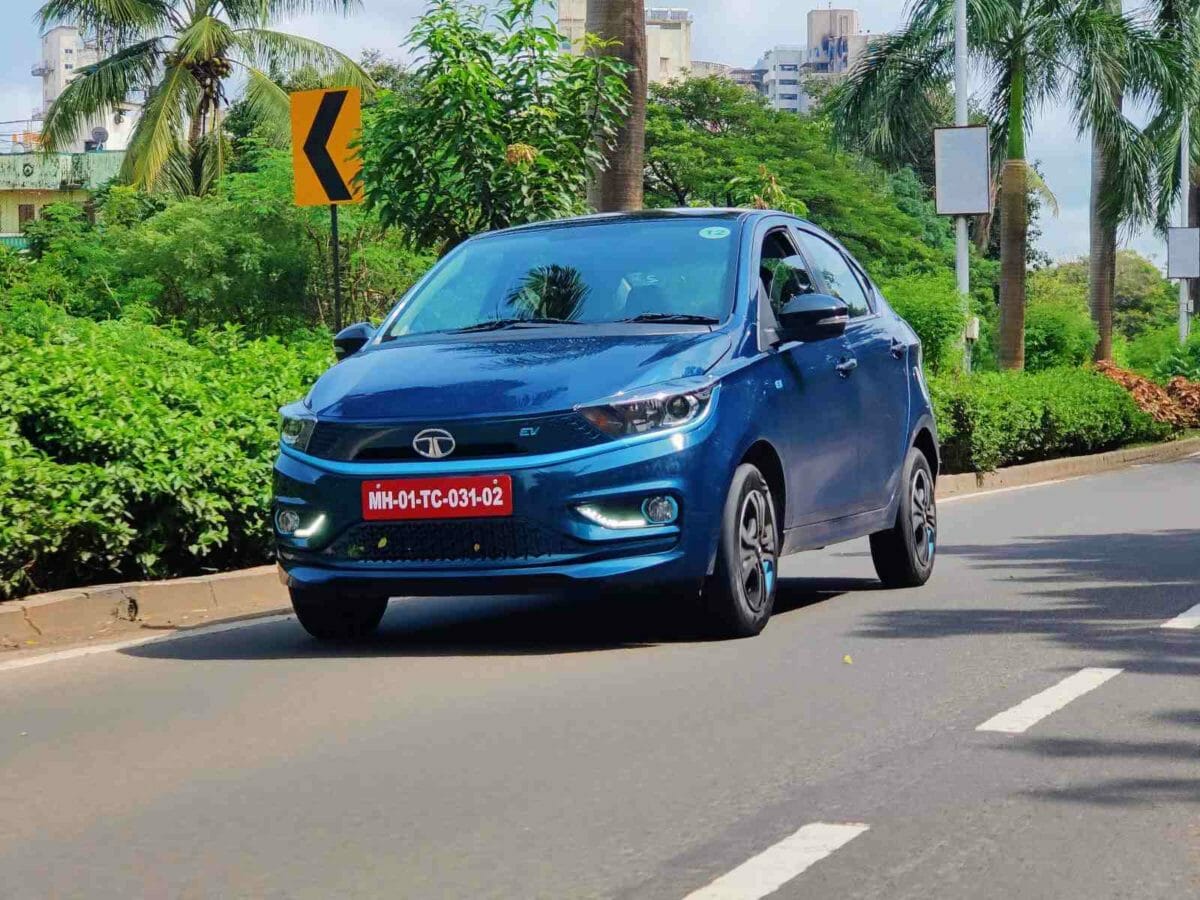
Variants & Price
Tata Motors is offering the new Tigor EV in three variants: XE, XM, XZ+ (XZ+ Dual Tone option available), which come with an 8 year and 160,000 KM battery and motor warranty for the EV owners. The car will be available in two colour options – Signature Teal Blue and Daytona Grey.
Here’s how the Tigor EV variants are priced:
XE: ₹11.99 lakh
XM: ₹12.49 lakh
XZ+: ₹12.99 lakh
XZ+ Dual Tone: ₹13.14 lakh
We somewhat feel the price should have been lesser by ₹50,000 to ₹70,000 as the interiors of the car do not feel premium for a ₹13L+ car. Below is a complete break-up of the variant wise features.
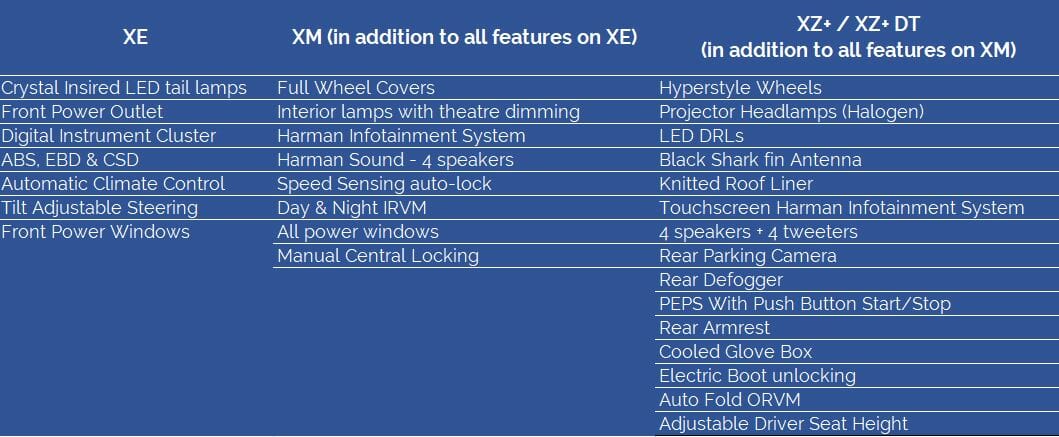
Verdict
Well, there is no denying the fact that this is the most affordable EV in India and it delivers in terms of range and performance. It is a great city car and will serve most buyers really well on the highways too. Long trips are not impossible if you plan them well. Tata’s network and other third party power grids keep you covered even between cities. Of course, the network is not as it should be but, it has grown enough for you to be able to live with an EV. That being said, Tigor EV excels in performance, handling, ride quality and of course safety. The battery range is also decent and is comparable to the bigger Nexon EV. Where the Tigor lacks is the interior fit and finish and the quality of components used inside the car. There is no doubt that the car will make good on your investment in a few years by saving fuel and maintenance costs, however, when you spend over ₹12 lakh even for the base variant, you feel that you should at least feel like you are driving a premium ₹12L + car. Yes, if Tata reduces the price by 50-70 thousand, it definitely makes a strong case for itself.
